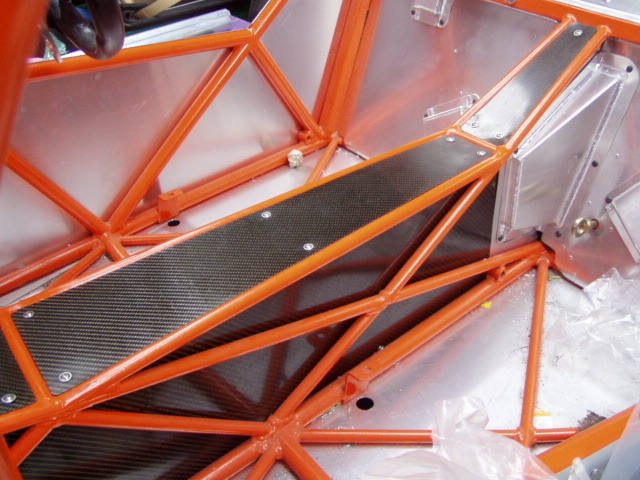smart51
|
| posted on 1/1/17 at 11:32 AM |

|
|
minimum space frame angle
when designing a space frame that is long amd thin, you break it up into smaller rectangles so that the diagonals are at a reasonable angle to the
sides. But what is the minimum acceptable angle for the diagonals. There' son need to make them all 45 degrees, but how low can you go? 30?
15?
|
|
|
|
|
mcerd1
|
| posted on 1/1/17 at 11:51 AM |

|
|
At work I'd normally say around 30 deg as a min, but it will depend on on the size of your welders shrouds I guess...
-
|
|
|
SPYDER
|
| posted on 1/1/17 at 12:42 PM |

|
|
There are a few on my Phoenix that are less than 30 degrees.


|
|
|
coyoteboy
|
| posted on 1/1/17 at 03:23 PM |

|
|
30 degrees should be fine, even less than that if you can come in at an angle sideways. Tighter than that maybe consider a different type of joint?
Can you use gussets or meet it at a thick walled cylinder instead? Depends on the loads at that location and fully understanding the impact.
|
|
|
smart51
|
| posted on 1/1/17 at 04:09 PM |

|
|
Interesting, I hadn't thought about the practicality of welding the joint. I was more wondering at what point it stops acting like a triangle
and starts acting like parallel tubes.
|
|
|
907
|
| posted on 1/1/17 at 04:52 PM |

|
|
I got my chassis inspiration from one of these.

 
Description
|
|
|
Sam_68
|
| posted on 1/1/17 at 05:51 PM |

|
|
quote:
Originally posted by smart51
I was more wondering at what point it stops acting like a triangle and starts acting like parallel tubes.
It's more a case of equalising the amount of work each tube is doing, depending on the direction of the forces being fed through it.
As a general rule, and assuming the frame is designed to distribute the forces fairly evenly, equiangular/equilateral triangles are best, and anything
less than 60 degrees is sub-optimal. But it's progressive, so there's no absolute line-in-the-sand where the figure on one side is
unacceptable and the other side is fine.
Of course it's also possible to manage and equalise the stresses in individual tubes by using different tube sizes and/or gauges, according to
how much work they're doing.
[Edited on 1/1/17 by Sam_68]
|
|
|
smart51
|
| posted on 1/1/17 at 07:06 PM |

|
|
quote:
Originally posted by Sam_68
quote:
Originally posted by smart51
I was more wondering at what point it stops acting like a triangle and starts acting like parallel tubes.
It's more a case of equalising the amount of work each tube is doing, depending on the direction of the forces being fed through it.
As a general rule, and assuming the frame us designed to distribute the forces fairly evenly, equiangular/equilateral triangles are best, and anything
less than 60 degrees is sub-optimal. But it's progressive, so there's on absolute line-in-the-sand where the figure on one side is
unacceptable and the other side is fine.
Of course it's also possible to manage and equalise the stresses in individual tubes by using different tube sizes and/or gauges, according to
how much work they're doing.
Thanks Sam. That makes a lot of sense.
|
|
|
britishtrident
|
| posted on 1/1/17 at 07:34 PM |

|
|
You can grind a nozzle shroud into a fancy shape for access into the corners.
[I] “ What use our work, Bennet, if we cannot care for those we love? .”
― From BBC TV/Amazon's Ripper Street.
[/I]
|
|
|









